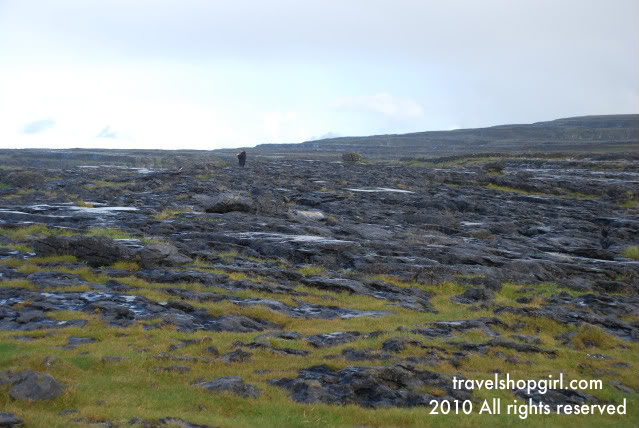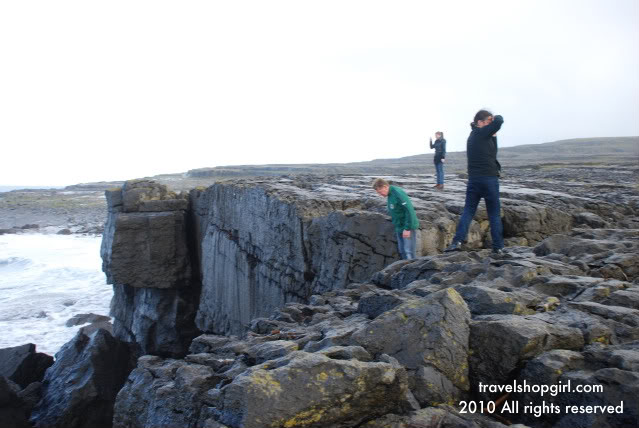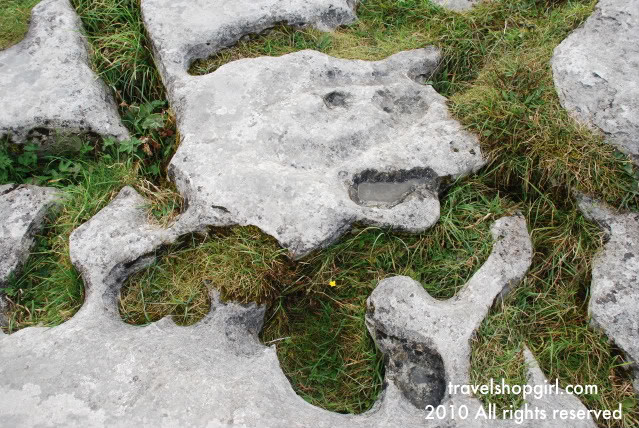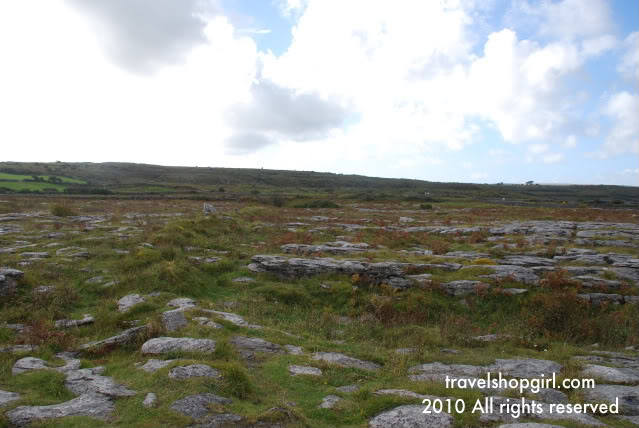
On our recent trip to Ireland, we drove through The Burren. What is The Burren? The Burren (Irish: Boireann, meaning “great rock”, Boirinn, the dative form, is the modern form used by the Ordnance Survey) is a karst-landscape region in northwest County Clare, in Ireland. It is one of the largest karst landscapes in Europe.
The region measures approximately 250 square kilometres and is enclosed roughly within the circle made by the villages Ballyvaughan, Kinvara, Tubber, Corofin, Kilfenora and Lisdoonvarna. It’s bounded by the Atlantic and Galway Bay on the west and north, respectively. A small portion of the Burren has been designated as Burren National Park. It is one of only six National Parks in the Republic of Ireland and the smallest in size (15 km²). While you’re here, venture out and pay a visit to Donegal nearby.
What is a karst-landscape? Karst is an irregular limestone region with sinkholes, underground streams, and caverns. When you look out over this area, it looks like a big rocky area and that’s it.
Look Closer at The Burren
But if you look closer what you will see is that although primarily rock, there’s an abundance of plants and animals here. In fact, The Burren is renowned for its remarkable assemblage of plants and animals. The region supports many rare Irish species, some of which are only found in this area. Others occur in similar karst areas in western Ireland.
Notable insects present in the Burren include the butterfly the Pearl-bordered Fritillary Boloria euphrosyne, Brown Hairstreak Thecla betulae, Marsh Fritillary Euphydryas aurinia and Wood White Leptidea sinapis; the moths, the Burren Green Calamia tridens, Irish Annulet Odontognophos dumetata and Transparent Burnet Zygaena purpuralis; the hoverfly Doros profuges and the water-beetle Ochthebius nilssoni. This last species is known from just 5 sites in the world, its type locality in northern Sweden and four marl lakes in the Burren.
Arriving At The Burren

When we arrived, it was raining outside so we sat in our tour shuttle bus for a moment and then the rain let up. We walked and then skipped across the rocks toward the water. This area is so different from anything I have seen before. The greenest grass grows in between oddly shaped rocks that dot the countryside. We stood at the end of a cliff overlooking the water and could not take enough pictures of the surrounding landscape.

If you look closely at the rocks beneath your feet that are weirdly shaped and formed, you feel like you are walking on history. Solutional processes have widened and deepened pre-existing vertical joints, or lines of weakness in the rock resulting in the formation of an extensive system of fissures (grykes) separated by flat pavement like slabs (Clints).

Whether raining or if the sun would peek out from behind the clouds a few moments later, The Burren’s beauty remained. We drove for miles and continued to see this rocky landscape all around us in The Burren. People build houses all around this area and we even saw an area where people parked their RV’s and camped out. Why would anyone want to camp out here? Maybe because it was close to the water, but maybe because they were in The Burren itself.
Popular Culture Fact
Apparently the movie, The Princess Bride, was filmed in The Burren. It’s been awhile since I’ve seen that 1987 movie so I can’t recall any of it, no less any parts from The Burren. Anyone remember it?
If you enjoy nature, geology, animals, water, and the like — then a visit to The Burren might be right for you. I could have spent far longer learning about the area and just sitting on the rocks staring out toward the water. Next stop on our trip: Poulnabrone Portal Tomb.
Have you visited The Burren or Ireland? Let me know in the comments below. Don’t forget to check out the rest of the Travel Shop Girl website, too.



